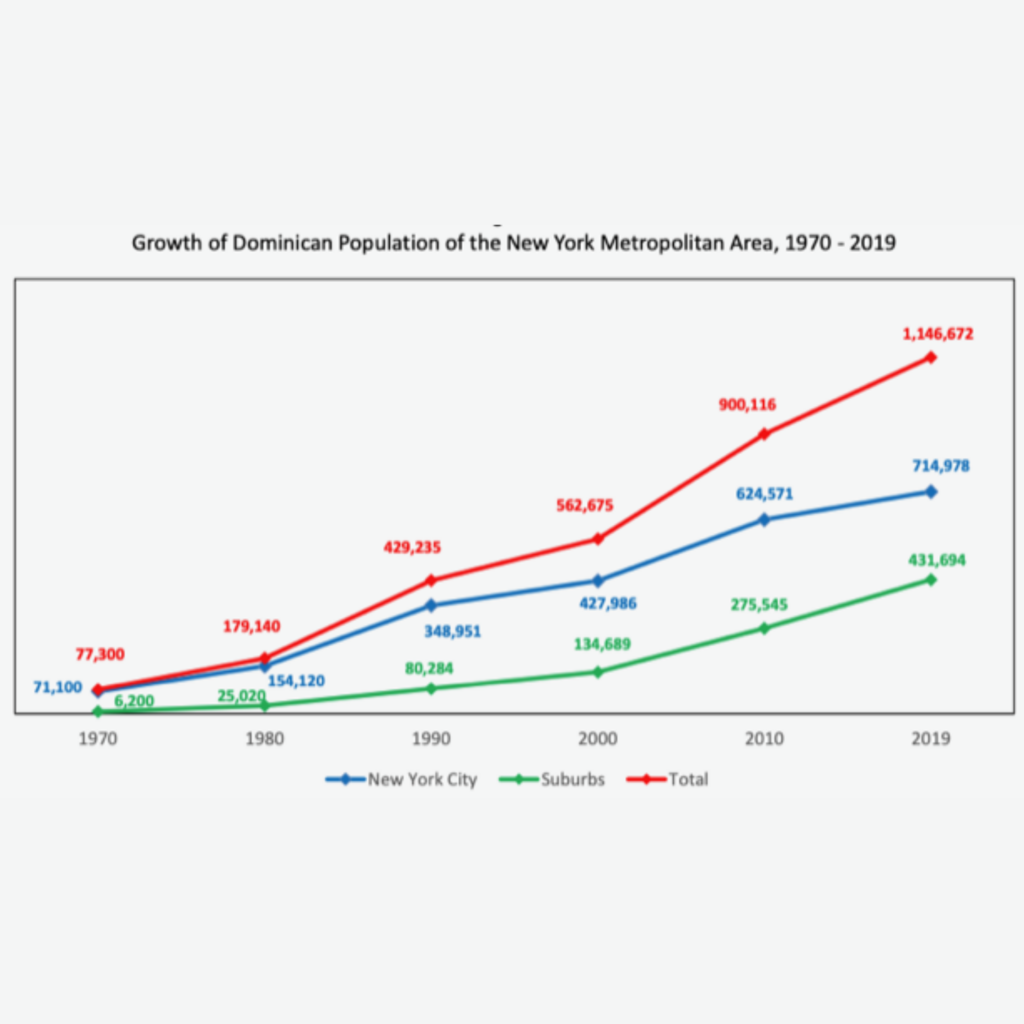A New Report from the Center for Latin American, Caribbean and Latino Studies at The Graduate Center, CUNY Studies the Dominican Population in the New York Metropolitan Area
Contact:
E-mail: clacls@gc.cuny.edu
NEW YORK, April 7, 2021—The Graduate Center of The City University of New York’s Center for Latin American, Caribbean and Latino Studies (CLACLS) has released a report on the changes in the Dominican Population of the New York metropolitan area.
The report, titled “The Dominican Population of the New York Metro Region, 1970-2019” examines key socioeconomic and demographic trends among Dominicans living in the area, who are now the largest Latino national subgroup in New York City.
Dominican migrants arriving in the New York metropolitan region settled primarily in New York City, in Washington Heights and the Bronx. In 1970 92% of all Dominicans living in the region were found in the City although this percentage steadily decreased in each decade until 2019 when 62% lived there, the other 38% in the surrounding counties. Within the City, the epicenter of Dominican settlement shifted from Washington Heights to the Bronx. By 2019 47% of all Dominicans in the City lived in the Bronx compared with 24% who lived in Manhattan.
Other key findings:
• By 2019 20% of all Dominican adults had attained a B.A. degree or higher rising from 1.4% in 1970.
• Dominican women 25 years of age and older had consistently higher college graduation rates than Dominican men. By 2019 nearly 22% of all Dominican women had completed a B. A. degree or higher, compared with about 17% of Dominican men.
• In 2019 nearly 35% of all Dominican adults who had been born in the U.S. had at least completed college compared with nearly 16% of Dominicans born in the Dominican Republic.
• Dominican households in the region experienced significant increases in real median household incomes over the period between 1980 and 2019 rising from $38,896 (in 2019 inflation-adjusted dollars) to $67,600. However, by 2019 64% of all Dominican households in the region were headed by women and they earned significantly lower median household income ($43,000) compared with male-headed households ($66,450).
• Poverty rates among Dominicans peaked at 34% in 1980 and 1990, but fell steadily thereafter to 19% in 2019.
• Bilingualism was an integral part of Dominican culture in the region as 91% of all Dominicans spoke Spanish at home in 2019.
• Dominicans increasingly became citizens. In 1980 about 38% were citizens, rising to 76% in 2019. Of these, 44% of all Dominicans in the New York metro area were born in the U.S. and citizens by birth; 32% because of naturalization.
Contact Sebastián Villamizar-Santamaría, Director of Quantitative Research, for a PDF of the report at svillamizarsantamaria@gradcenter.cuny.edu.
About The Center for Latin American, Caribbean and Latino Studies
The core mission of CLACLS is to actively support and advance the study of Latin America, the Caribbean, and Latinos in the U.S. in the doctoral programs of The Graduate Center, and to provide opportunities for Latino students at the Ph.D. level. CLACLS’s flagship program is the Latino Data Project, established in 2003 by Laird W. Bergad founding and current CLACLS director. Bergad is a distinguished professor in the Department of Latin American, Puerto Rican, and Latino Studies at Lehman College and with the Ph.D. Program in History at The Graduate Center. The Latino Data Project conducts detailed quantitative research on the Latino population of the United States and New York City metropolitan region, analyzing raw data files produced by the U.S. Census Bureau and other government agencies.
About The Graduate Center, CUNY
The Graduate Center of The City University of New York (CUNY) is a leader in public graduate education devoted to enhancing the public good through pioneering research, serious learning, and reasoned debate. The Graduate Center offers ambitious students more than 40 doctoral and master’s programs of the highest caliber, taught by top faculty from throughout CUNY — the nation’s largest public urban university. Through its nearly 40 centers, institutes, and initiatives, including its Advanced Science Research Center (ASRC), The Graduate Center influences public policy and discourse and shapes innovation. The Graduate Center’s extensive public programs make it a home for culture and conversation.




Leave a Reply